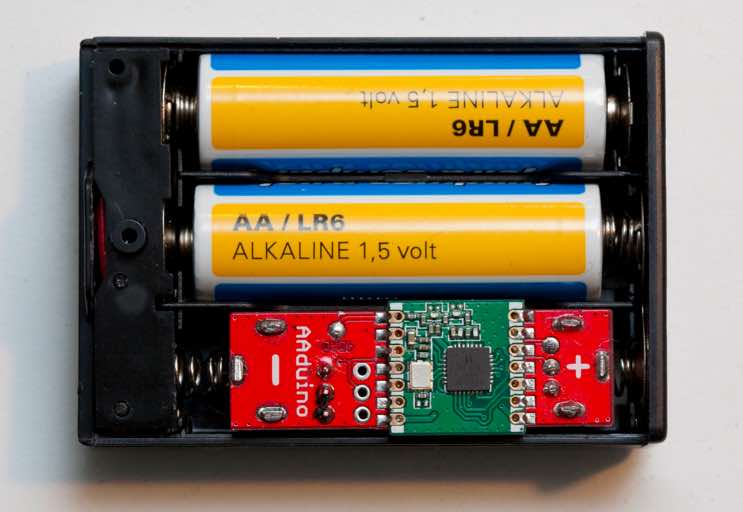It fits in a AA battery holder.
http://makezine.com/2016/04/24/meet-arduino-clone-thats-size-aa-battery/

http://makezine.com/2016/04/24/meet-arduino-clone-thats-size-aa-battery/


Anyone have any idea how long the batteries would last in a thing like this?
Total battery life will depend "mostly" on radio ON/OFF ratio, assuming that the rest is neglictible. I suppose that there also low-power states for the arduinosAnyone have any idea how long the batteries would last in a thing like this?
The RFM96 of the pìcture can draw up to 100mA when transmitting, about 10mA when in receive mode, and only 1uA when in Sleep mode. So,if the module is put to SLEEP and wake up every 60sec (this can be programmed through SPI registers), transmit for 0.5 seconds and sleep again, battery life will increase a lot
so now I am developing the part where both micro and radio module go to sleep and wake up periodically with a timer, so that battery lasts as much as possible.
I will, even though but it is not an arduino project, in this case I am using a Renesas microcontrollerPlease keep us informed of this.
